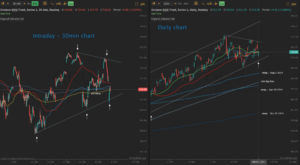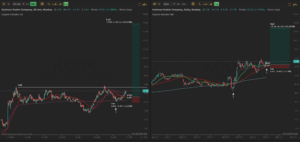In times of financial stress, your 401(k) might seem like a lifeline—but is dipping into your retirement savings really the best move? More employees than ever are withdrawing from their 401(k) accounts early to cover emergencies, and while it may offer temporary relief, the long-term consequences could be costly.
Recent data from Vanguard Group shows that nearly 5% of retirement account holders made early withdrawals last year—up from 3.6% in 2023 and more than double the pre-pandemic rate. Many of these withdrawals were for urgent expenses like medical bills, credit card debt, or to prevent foreclosure and eviction.
While it’s reassuring to have savings available in a pinch, this growing trend is also a red flag. The increased reliance on 401(k) funds for day-to-day survival suggests that many employees are struggling to keep up with rising costs, high-interest debt, and unexpected financial hardships.
The True Cost of Early Withdrawals
While withdrawing from your 401(k) may seem like an easy solution, it often comes at a steep price:
- Taxes & Penalties: If you’re under 59½ years old, an early withdrawal from a traditional 401(k) is subject to a 10% penalty on top of income tax. This means you could lose a significant portion of your savings before you even see the money.
- Lost Growth Potential: The median hardship withdrawal in 2024 was $2,200. While that may seem like a small amount, taking money out now means you lose out on potential market growth and compound interest, reducing your future retirement balance.
- A Shrinking Nest Egg: While 401(k) balances grew an average of 10% last year, taking money out now could leave you with far less in the long run when you actually need it—during retirement.
What’s Driving This Trend?
More Americans than ever are auto-enrolled in workplace retirement plans, making 401(k)s the largest savings vehicle for many workers. However, financial pressures like high mortgage rates, rising rent, and increasing credit card debt have pushed more people into financial distress.
To make matters more complicated, recent policy changes have made it easier to access 401(k) savings for emergencies. The IRS now allows penalty-free withdrawals for hardships like paying college tuition or buying a home. A new provision also lets employees withdraw up to $1,000 per year for emergency expenses—potentially increasing early withdrawal rates even further.
Protecting Your Retirement While Handling Emergencies
If you’re considering an early 401(k) withdrawal, here are some alternatives to explore first:
✅ Emergency Savings Fund: Start small and build a separate fund for unexpected expenses.
✅ 401(k) Loan: Unlike a withdrawal, a 401(k) loan lets you borrow from your balance and repay it over time—without triggering penalties.
✅ Debt Restructuring: If you’re struggling with credit card or loan payments, consider refinancing or negotiating new terms with creditors.
✅ Financial Guidance: A professional financial planner can help you explore other options before tapping into retirement funds.
Secure Your Financial Future
Your 401(k) is meant to provide a stable future—not just a quick fix. Before making any withdrawals, weigh the costs and explore all available options.
Want to learn how to make the most of your retirement savings?
Download our free 401(k) Success Guide today and take control of your financial future!












